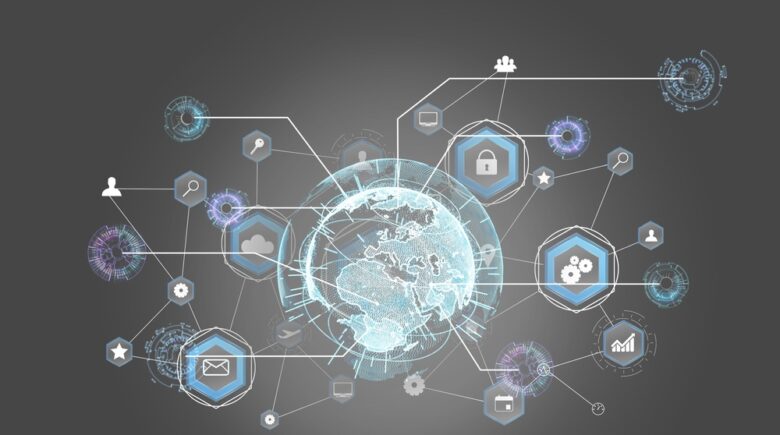Remember when managing your money meant visiting a bank branch and keeping track of multiple accounts with paper statements? Those days are fading fast. Open banking is revolutionizing how we interact with our finances, giving us unprecedented control and visibility over our money. This shift isn’t just about convenience—it’s fundamentally changing the relationship between consumers, banks, and financial technology companies. As millennials increasingly demand seamless digital experiences, open banking is delivering exactly that while raising important questions about data privacy and security.
What Open Banking Means for Your Daily Finances
Open banking allows third-party financial service providers to access your banking data with your permission. Think of it as giving your favorite budgeting app a backstage pass to your financial life. Instead of manually entering transactions or linking accounts through screen scraping, these apps can now pull your data directly from your bank through secure APIs (application programming interfaces).
This technology transforms everyday money management in practical ways. You can see all your accounts—checking, savings, credit cards, investments—in one place through apps like Mint or YNAB. Your budgeting app updates automatically when you make a purchase. Payment apps can verify your account balance instantly before processing a transaction. This real-time visibility helps you make better financial decisions on the spot.
The impact extends beyond simple account aggregation. Open banking enables smarter financial tools that can analyze your spending patterns and offer personalized advice. Some apps can automatically move money to savings when you overspend in certain categories. Others can negotiate better rates on your behalf by comparing your spending with available credit card rewards. These innovations put financial intelligence in your pocket, not just in your banker’s office.
Real-World Applications That Matter
Consider how open banking streamlines bill payments. Services like Plaid connect your bank account to various payment platforms, eliminating the need to enter routing numbers or wait for micro-deposits to verify your account. You can pay rent, split dinner bills, or send money to friends in seconds rather than days.
Investment platforms benefit tremendously too. Robo-advisors can assess your complete financial picture before recommending investment strategies. They see your income, expenses, debts, and existing investments all at once. This holistic view leads to better financial planning than traditional methods where you’d manually report your finances to an advisor.
Small business owners gain significant advantages as well. Open banking lets accounting software automatically categorize business expenses and reconcile accounts. Invoice financing becomes faster when lenders can instantly verify cash flow. These efficiencies save time and reduce errors that plague manual bookkeeping.
Why Banks Are Now Sharing Your Financial Data
The shift toward open banking didn’t happen because banks suddenly became generous with customer data. Regulatory pressure and competitive threats forced this transformation. In Europe, the revised Payment Services Directive (PSD2) mandated that banks open their data infrastructure. While the U.S. hasn’t enacted similar legislation, the Consumer Financial Protection Bureau has signaled strong support for open banking principles.
Banks initially resisted sharing customer data with third parties. They worried about security risks, liability issues, and losing their competitive advantage. Traditional banks built their business models on being the sole gatekeepers of financial information. Open banking disrupts this monopoly by commoditizing access to financial data.
However, many banks now recognize that embracing open banking offers strategic benefits. They can partner with fintech companies to offer innovative services without building everything in-house. Banks that resist risk becoming irrelevant as customers migrate toward institutions that support their favorite financial apps. The choice became clear: adapt or lose customers to more digitally savvy competitors.
The Fintech Catalyst
Fintech companies accelerated open banking’s adoption by creating compelling consumer experiences. Venmo made splitting bills effortless. Robinhood democratized investing. Chime offered fee-free banking with automatic savings features. These services required access to traditional banking infrastructure, creating pressure for data sharing standards.
The relationship between banks and fintechs has evolved from adversarial to collaborative. Many banks now view fintech partnerships as innovation labs. They can test new features through fintech collaborations before rolling them out system-wide. This approach lets established banks move faster than their traditional development cycles would allow.
Consumer demand ultimately drives this ecosystem. Millennials expect their financial services to work as seamlessly as Netflix or Spotify. They want personalized recommendations, instant transactions, and unified interfaces. Open banking provides the technical foundation for meeting these expectations.
Security and Privacy Considerations
Open banking raises legitimate concerns about data security and privacy. When you authorize third-party access to your bank account, you’re trusting multiple companies with sensitive information. Each additional connection potentially creates new vulnerabilities for hackers to exploit.
However, open banking can actually improve security compared to older methods. Traditional account aggregation relied on screen scraping, which required sharing your actual banking credentials with third parties. Open banking uses secure APIs that grant limited access without exposing your login information. You can revoke access instantly if you stop using a service.
Regulatory frameworks are evolving to protect consumers in this new landscape. The CFPB has proposed rules requiring clear disclosure when companies access your financial data. These regulations would mandate that consumers can easily see which companies have access and revoke permissions when desired. Still, consumers must remain vigilant about which apps they authorize and regularly audit their connected services.
Looking Ahead
Open banking continues evolving rapidly. Future developments may include real-time credit scoring that updates as your financial situation changes. Imagine applying for a mortgage and receiving instant approval based on live data rather than outdated credit reports. Or consider insurance premiums that adjust automatically based on your current financial stability.
The technology could enable more sophisticated financial automation. Your banking system might automatically refinance loans when better rates become available. It could shift money between accounts to maximize interest earnings while maintaining necessary liquidity. These capabilities transform banks from passive repositories into active financial management partners.
International standards are emerging to facilitate cross-border open banking. This could simplify everything from sending remittances to managing finances while traveling abroad. The vision is a globally connected financial system where your money moves as freely as information across the internet.
Open banking represents more than just a technological upgrade—it’s a fundamental reimagining of financial services for the digital age. While challenges around security and privacy require ongoing attention, the benefits of improved financial visibility, smarter money management tools, and enhanced competition are already tangible. As this ecosystem matures, millennials who embrace these tools will find themselves with unprecedented control over their financial lives. The key is staying informed about how your data gets used while taking advantage of innovations that genuinely improve your financial wellbeing. The future of money management is open, connected, and increasingly intelligent.
References
- Consumer Financial Protection Bureau. “Policy Statement on Consumer Authorized Financial Data Sharing and Aggregation.” CFPB.gov, https://www.consumerfinance.gov/about-us/newsroom/cfpb-policy-statement-consumer-authorized-financial-data-sharing-and-aggregation/
- Konsko, Lindsay. “What Is Open Banking?” NerdWallet, https://www.nerdwallet.com/article/banking/open-banking
- Browne, Ryan. “What is open banking and how is it changing the way we manage our money?” CNBC, https://www.cnbc.com/2023/01/26/what-is-open-banking-and-how-does-it-work.html

